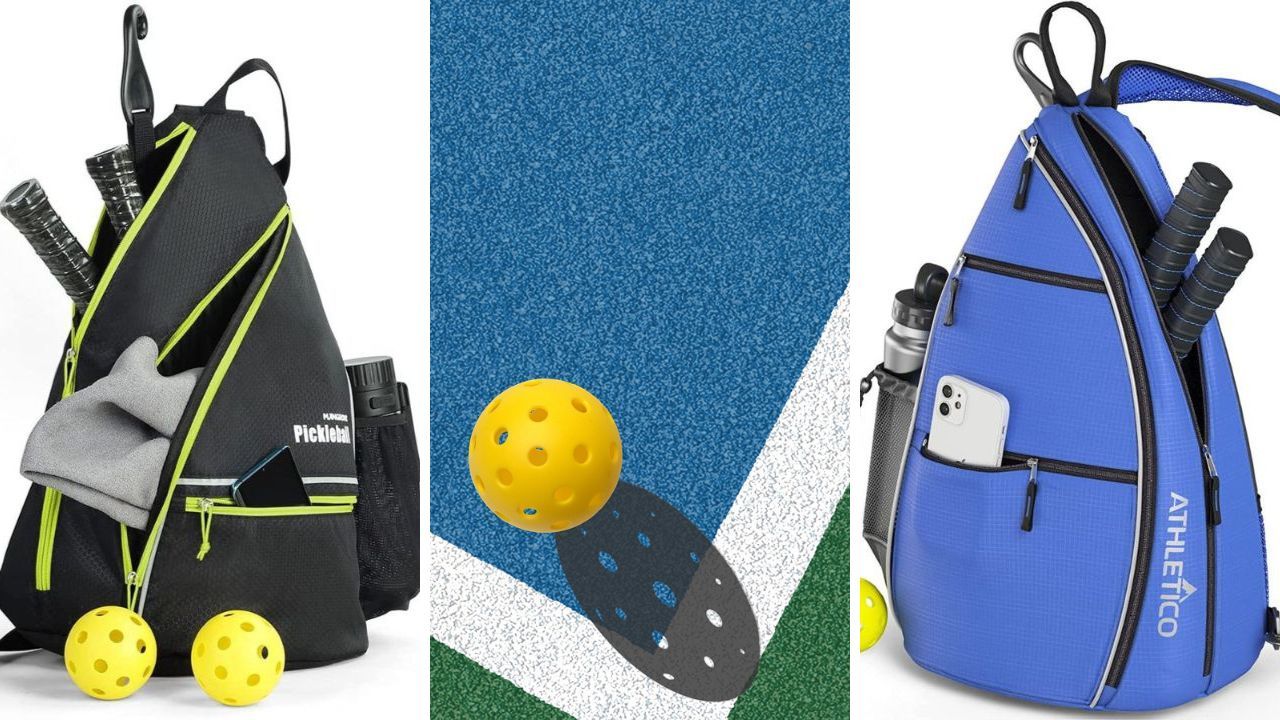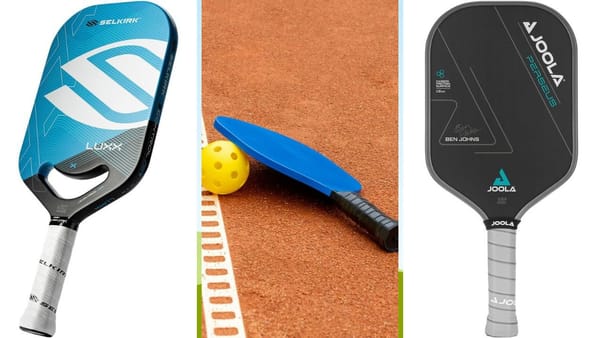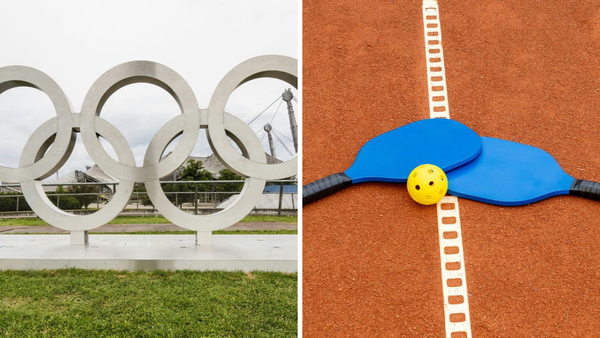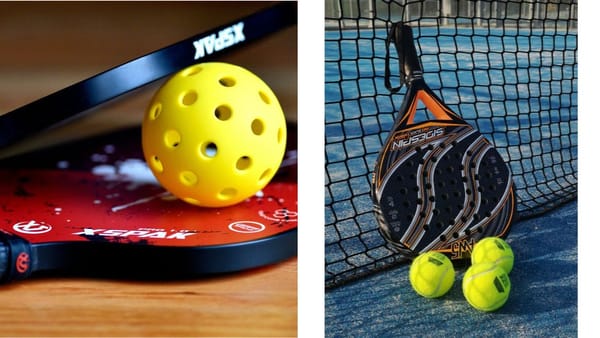If you're new to the sport of pickleball, you may have come across the term "Double Bounce Rule" and wondered what it entails.
In this article, we'll walk you through the basic foundation of pickleball and explain the ins and outs of this rule, which plays a crucial role in maintaining fair gameplay.
The Basics of Pickleball
Pickleball is a fast-paced paddle sport that combines elements of tennis, badminton, and ping pong.
It can be played both indoors and outdoors on a court that resembles a smaller version of a tennis court.
The game is played with a paddle and a plastic ball with holes, similar to a wiffle ball.
The objective is to hit the ball over the net, aiming for it to land within the boundaries of the opponent's court.

The Pickleball Double Bounce Rule Explained
The double bounce rule in pickleball is a fundamental rule that ensures fairness and equal opportunity for both teams.
According to this rule, each team must allow the ball to bounce once on their side of the court before hitting it back over the net.
This means that the serving team must let the ball bounce once after their serve, and the receiving team must also let the ball bounce once before returning it.
For example, in a doubles game, when Team A serves the ball, it must clear the net and land within the opponent's court.
Once the ball bounces on the receiving team's side, they must let it bounce once before returning it. The serving team must also let the ball bounce once before hitting their next shot.
After these initial bounces, the players are free to hit the ball without any restrictions.
The Importance of the Double Bounce Rule
The double bounce rule is an essential aspect of pickleball as it promotes strategy, fairness, and longer rallies.
By requiring both teams to allow the ball to bounce before hitting it, it levels the playing field and prevents an overly dominant serving team from easily winning points.
It gives the receiving team a chance to set up their position and creates opportunities for different types of shots, such as dinks and volleys, which add variety and excitement to the game.
Additionally, the double bounce rule encourages players to develop patience, control, and precise shot placement.
It forces players to focus on positioning and strategy rather than relying solely on power.
This aspect of the game makes pickleball accessible to players of all ages and skill levels, fostering a welcoming and inclusive environment.

Tips for Mastering the Double Bounce Rule
If you're struggling with the double bounce rule, here are a few tips to improve your technique and overall gameplay:
- Practice your footwork: Good footwork is crucial in pickleball. Move quickly and position yourself to anticipate where the ball will bounce, allowing you to make a well-timed shot.
- Focus on soft shots: Instead of trying to hit powerful shots, work on developing your touch and finesse. Practice dinking, which involves softly dropping the ball over the net, and improve your ability to control the pace and placement of your shots.
- Communicate with your partner: In doubles play, effective communication with your partner is key. Discuss your positioning, signal who will take each shot, and coordinate your movements to maximize your chances of successfully returning the ball.
- Watch experienced players: Observing skilled players can provide valuable insights into how they navigate the double bounce rule. Pay attention to their shot selection, footwork, and decision-making during rallies.
What Is The Double Bounce Rule In Pickleball?
Some Final Thoughts
Remember, like any rule in sports, the double bounce rule in pickleball is designed to ensure fairness and enhance the overall enjoyment of the game.
Embrace it as an opportunity to improve your skills and engage in exciting, strategic gameplay.
So, whether you're a seasoned pickleball player or new to the sport, understanding and mastering the double-bounce rule will undoubtedly take your game to the next level.
Have fun on the court and enjoy the thrill of this dynamic and ever-growing sport!
FAQ's
What is the double bounce rule in pickleball?
- The double bounce rule in pickleball requires each team to let the ball bounce once on their side before returning it.
Why is there a double bounce rule in pickleball?
- The double bounce rule promotes fairness and longer rallies by giving both teams an equal opportunity to hit the ball after it has bounced.
Does the double bounce rule apply to both singles and doubles play?
- Yes, the double bounce rule applies to both singles and doubles play in pickleball.
When does the double bounce rule come into effect during a point?
- The double bounce rule starts from the moment the serve is made. After the serve, both teams must let the ball bounce once before hitting it.
What happens if a player hits the ball before it has bounced twice?
- If a player hits the ball before it has bounced twice, it results in a side-out, and the opposing team gains the serve.
Can the serving team volley the ball before it has bounced?
No, even the serving team must let the ball bounce once on the receiving team's side before hitting it.
Is there a specific area on the court where the ball bounce rule applies?
- No, the double bounce rule applies to the entire court. Each team must allow the ball to bounce once anywhere on their side before returning it.
Is the double bounce rule only applicable for the first shot of the rally?
- No, the double bounce rule applies to every shot during a rally until one team fails to return the ball legally.
Can players intentionally violate the double bounce rule?
- No, intentionally violating the double bounce rule is against the rules of pickleball and can result in a loss of point or side-out.
Does the two bounce rule exist to slow down the game?
- The double bounce rule adds strategy and excitement to the game by allowing players to set up shots and engage in longer rallies.

Conclusion
Have you ever found yourself in a heated pickleball game and suddenly questioned the existence of the pickleball double bounce rule?
Don't worry, you're not alone. This rule states that once the serve is made, both teams must allow the ball to bounce once on their side before attempting to volley.
I know what you're thinking, "But what about the serve and volley advantage?" Fear not, my friend.
The non-volley zone line, also known as the kitchen, allows for a game of strategy and patience.
Only the serving team is allowed to score, meaning the receiving team must strategize and aim for that elusive third shot.
So, next time you're on the court, keep the second bounce rule in mind and strategize for that perfect third shot.












Member discussion